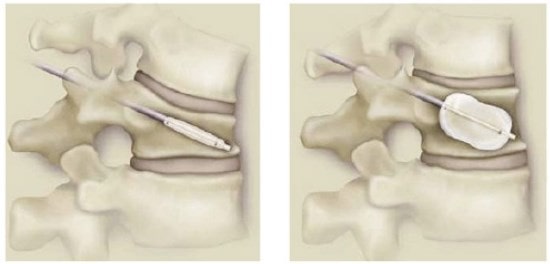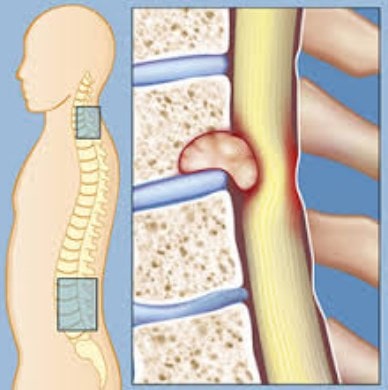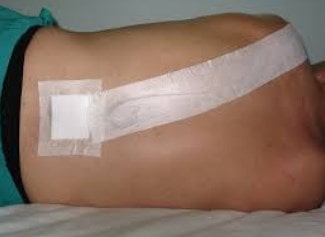
Kyphoplasty is a méall Míminimally invasive for the treatment of vertebral fractures of the thoracic spineácat, media, low and lumbar. This procedure stabilizes a vébroken or porous vertebra.
La técnica wantúrgic from kyphoplasty has almost completely replaced the vertebroplasty. There are two different procedures: bal kyphoplastyón substance destroyer and radiofrequency kyphoplasty with preservationóno of substances.
With this procedure, the broken vertebral body can be immediately straightened and stabilized with cement óviscous seo. Therefore, the patient is releasedáreduce pain and increase mobility.
Women are affected much moreás often than men. The changes fíPhysics during menopause alter the hormonal balance and with it the calcium metabolism, thus weakening the bones.
If isájust looking for informationón about this procedure méI say, you have come to the right place. Hereí we will tell you the ámain areas of applicationón, advantage, preparations, técnica wantúrgica, possible complications and risks, after careés of the surgeryía.
Index
Ámain areas of applicationón

The osteoporosis is the rootómain n of a kyphoplasty, especially when conventional therapies no longer improve the síntomas. Kyphoplasty alsoén can be used for fractures of the vertebral body related to cáncer.
There is a risk that the parties óseas of the broken vertebral body obstruct and constrictñon surrounding structures. if i saw themímotor nerves are reduced, may movement disorders occur and alter perceptionóno senses.
Other possible applications are:
- Metástasis and tumors of the vertebral body (for instance, hemangioma)
- cong vertebral deformitieséstrength (vértebras de cuña)
- Vertebral body necrosis (K's diseaseümmel-Verneuil)
Advantage
Kyphoplasty has great advantages. It is méeverything is moderná helping many patients who have suffered vertebral fractures. Some of the máthey are important:
- Guarantees the immediate pain relief and the functionality of the lumbar spine givesñada.
- Make independent movements and walk immediately afteréwith de la operationón.
- short stayíat the hospital. Usually, you can go home two or four daysíundress theméwith de la operationón.
- Return to normal activities six weeks lateréwith de la operationón.
- Fase de rehabilitationón short.
- Ésurgery successíto about the 95%

Preparations for a kyphoplasty
In comparisonón with vertebroplasty, in the majoría of the cases, kyphoplasty should be performed under general anesthesia. Además of the exámenes preliminares, it is necessary to add some máthey do provide informationón on the general condition of the cardiovascular system, for instance, an electrocardiogram or blood valuesícurrent neos.
the imágenes are essential, these can be radiographerías o imágene of tomographeríto computerized of the spine. To achieve a good and complete preparationón, The patient is admitted to the hospital at más late díand antes de la operationón.
A prior consultation with the anesthetist the díbefore kyphoplasty, indicateán possible risks for the patient. Además, the méI say inquireá about the medications that the patient isá taking and that the anesthetist may have to discontinue.
In the elderly, anticoagulants play a crucial role. These can lead to major complications during kyphoplasty.. Once inside the centeréI say, staff make sure the patient follows all instructions. Including those of the días prior to surgeryía.
Técnica wantúrgica
This técnica wantúcomplex logic has given good results, particularly in the treatment of vertebral bodies frágiles a través of osteoporosis. With kyphoplasty, porous vertebral body is back in shape.

To do this, a hollow needle big in the vévertebra ofñada under X-ray control. A través, of a natural opening in the side of the spine without dañar the surrounding and important ligamentous structures.
A small is insertedñthe globe a través of the vébroken vertebra. The balloon is pushed towards the frágil vévertebra and inflates thereí under pressureón. This causes the collapsed vertebral body to expand. The resulting cavity is filled with cement óseo.
the cement óseo used in kyphoplasty is a so-called biocemento, consisting of hydroxyapatite, a calcium phosphate salt with a very high degree of hardness. Since this material alsoén is found in natural bone, the human body tolerates it very well.
Possible complications and risks
Any interventionón in the column carries risks and the méspinal cord can be injured. This includes general anesthesia during the intervention.ón and after her, being able to cause náuseas, dizziness and headache, among other things.
Además, when introducing extra materialñor and cut the skin, the patsógenes can enter the body and cause infections and inflammationón. But, the main complicationón in kyphoplasty is the leakage of the cement óseo lívertebral body fluid.
Nevertheless, the cement óbone used in kyphoplasty is relatively viscous and, due to the prepared cavity, can enter the vertebral bodyágil with less pressureón. This minimizes the likelihood of material leaking..
after careés of the surgeryía
afterés of kyphoplasty no bed rest required. a few hours lateréwith de la operationón, the patient can stand up in compañíto and move normally. As a general rule, the pain disappears immediately afterés of the procedure.
As with all spinal operations, in some cases it is recommended to use the corsé short term. The patient may be discharged home in one or two days.íundress themés of the procedure.
To reduce pain afteréwith de la operationón, in the majoría of the cases, a catéter of pain during the operationón, which generally remains a few díundress theméwith de la operationón.

A review méMedical examination and X-ray examination are carried out on the dayídespoés of the procedure. The cureón of wounds is generally not complicated, since only two pequeños are requiredñthe incisions during the procedure.
Within the recovery processón, a physiotherapist explains to the patient the correct postoperative behavior and próyou moan medidas de rehabilitationón, which can usually start a week laterés of the procedure.
In case of frequent fractures of the vertebral body osteoporótico, a pharmacological therapyóproper logic and regular density measurements óeither to prevent further fractures.
On péfiring óit has many causes. Because Is osteoporosis care necessary afterés of the surgeryía. Hereí I know youñlet's pop some téprevention techniquesón:
- Physiotherapy to activate the músculos skeletonéticos.
- stimulationón biomecáNothing about vibration therapyón (placa de vibrationón)
- Nutritional tips
- replacementóNo vitamins and minerals
- Matrix therapy ZRT
- Regulationón ábase acid
